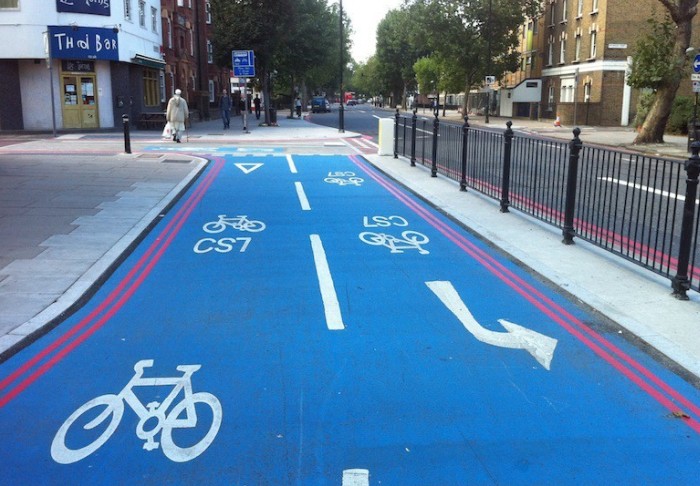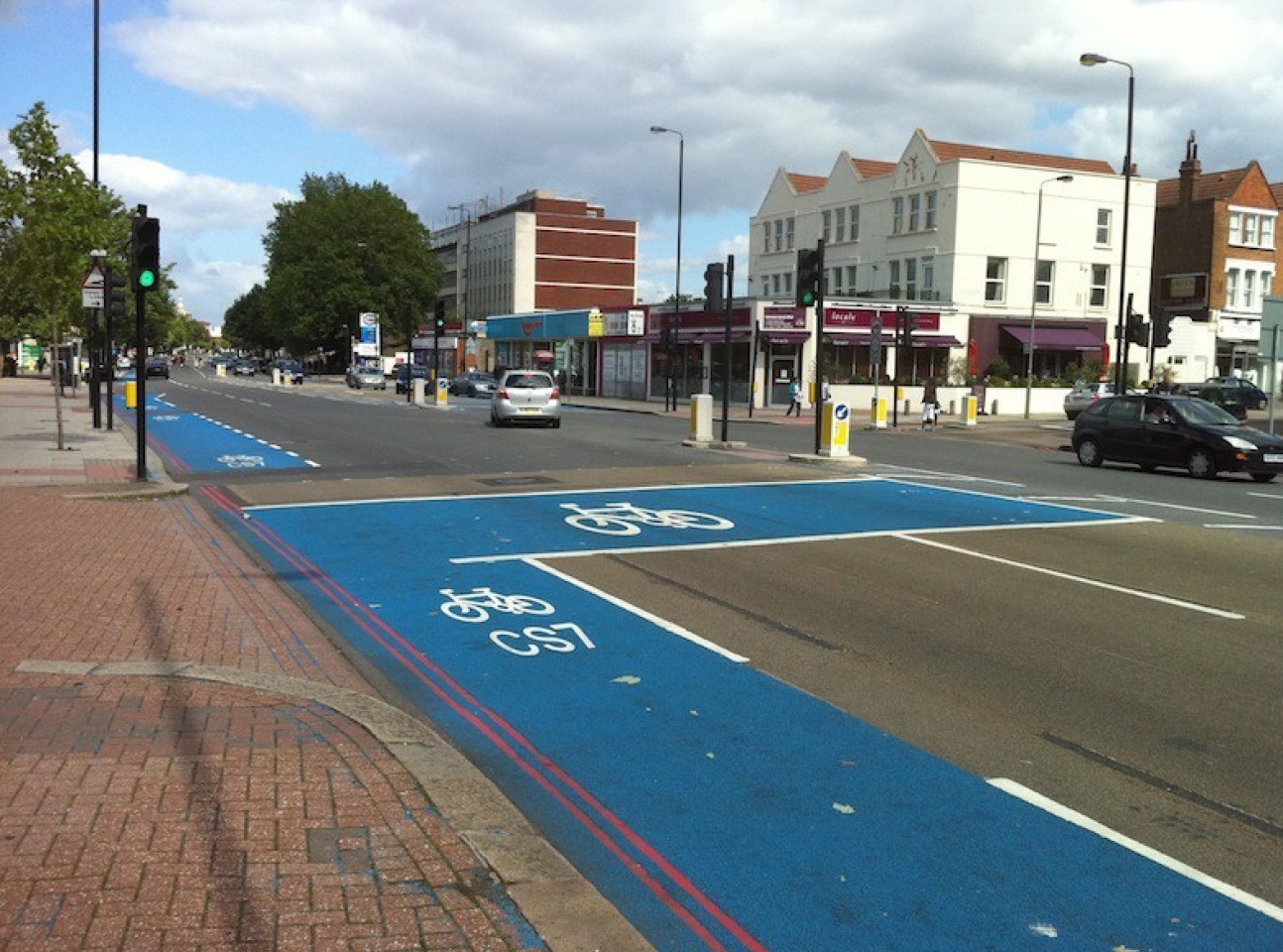No evidence that London’s Cycle Superhighways worsen traffic congestion

A new analysis finds special London cycle lanes, which aim to boost commuting by bicycle, do not negatively impact traffic speed.
The analysis is one of the first to assess the impact of Cycle Superhighways (CSs) on traffic congestion in London.
Our method provides evidence that Cycle Superhighways can be an effective intervention in metropolitan cities like London, which are heavily affected by congestion. Dr Prajamitra Bhuyan
The research team, from Imperial College London's Department of Mathematics and the Transport Strategy Centre in the Department of Civil and Environmental Engineering, along with the Alan Turing Institute and Southeast University, China, say the statistical method they used could also be applied to tackle other complex questions, such as whether such cycling schemes also have a positive impact on air pollution in cities. The results are published in the Annals of Applied Statistics.
London’s CSs (now called ‘Cycleways’) are 1.5-meter-wide barrier-free cycling paths designed to connect outer and central London, encouraging commuting by bike. They are part of the Mayor of London’s Transport Strategy, which set out the aim for cycling journeys in London to increase from 2% of all journeys in 2001 to 5% by 2026.
However, from the original 12 announced in 2008, only six have been opened, and there is some debate about their effectiveness at reducing road traffic congestion. The question is complicated by many confounding factors that affect congestion, such as the frequency of bus stops, the width and density of the local road network, and socio-economic factors including local employment rate.
Effective intervention
Now, the team has used advanced statistical models that incorporate multiple confounding factors to tease apart the impact of CSs on congestion and discover whether they caused a change or not. They used data from before the CSs were implemented and afterwards, from 2007-2014, to reduce the complications from comparing different areas of London where other socio-economic factors can have an outsized impact on congestion.
 They found that while CSs somewhat reduced traffic flow – the number of vehicles passing by in a certain time frame – they improved traffic speed, meaning overall there was little impact on congestion.
They found that while CSs somewhat reduced traffic flow – the number of vehicles passing by in a certain time frame – they improved traffic speed, meaning overall there was little impact on congestion.
Lead author of the study Dr Prajamitra Bhuyan, from the Department of Mathematics at Imperial, said: “Estimating the effect of the cycle superhighways on congestion has been difficult, as there are many factors at play and the highways themselves were not planned randomly – they have been placed in areas plagued with congestion.
“Our method provides evidence that Cycle Superhighways can be an effective intervention in metropolitan cities like London, which are heavily affected by congestion. We hope the method can also assist in effective decision making to improve the performance of the traffic and cycling network in cities.”
Other applications
The team say the method’s power in finding causal links between interventions like CSs and complex network like traffic could have many applications in other areas. Next, they hope to apply it to the issue of air pollution, analysing whether CSs have helped improve air quality through the reduction in emissions from road transport.
The research was funded by the Lloyd’s Register foundation and the Alan Turing Institute.
-
‘Analysing the Causal Effect of London Cycle Superhighways on Traffic Congestion’ by Prajamitra Bhuyan, Emma J. Mccoy, Haojie Haojie Li and Daniel J. Graham is published in Annals of Applied Statistics.
Article text (excluding photos or graphics) © Imperial College London.
Photos and graphics subject to third party copyright used with permission or © Imperial College London.
Reporter
Hayley Dunning
Communications Division